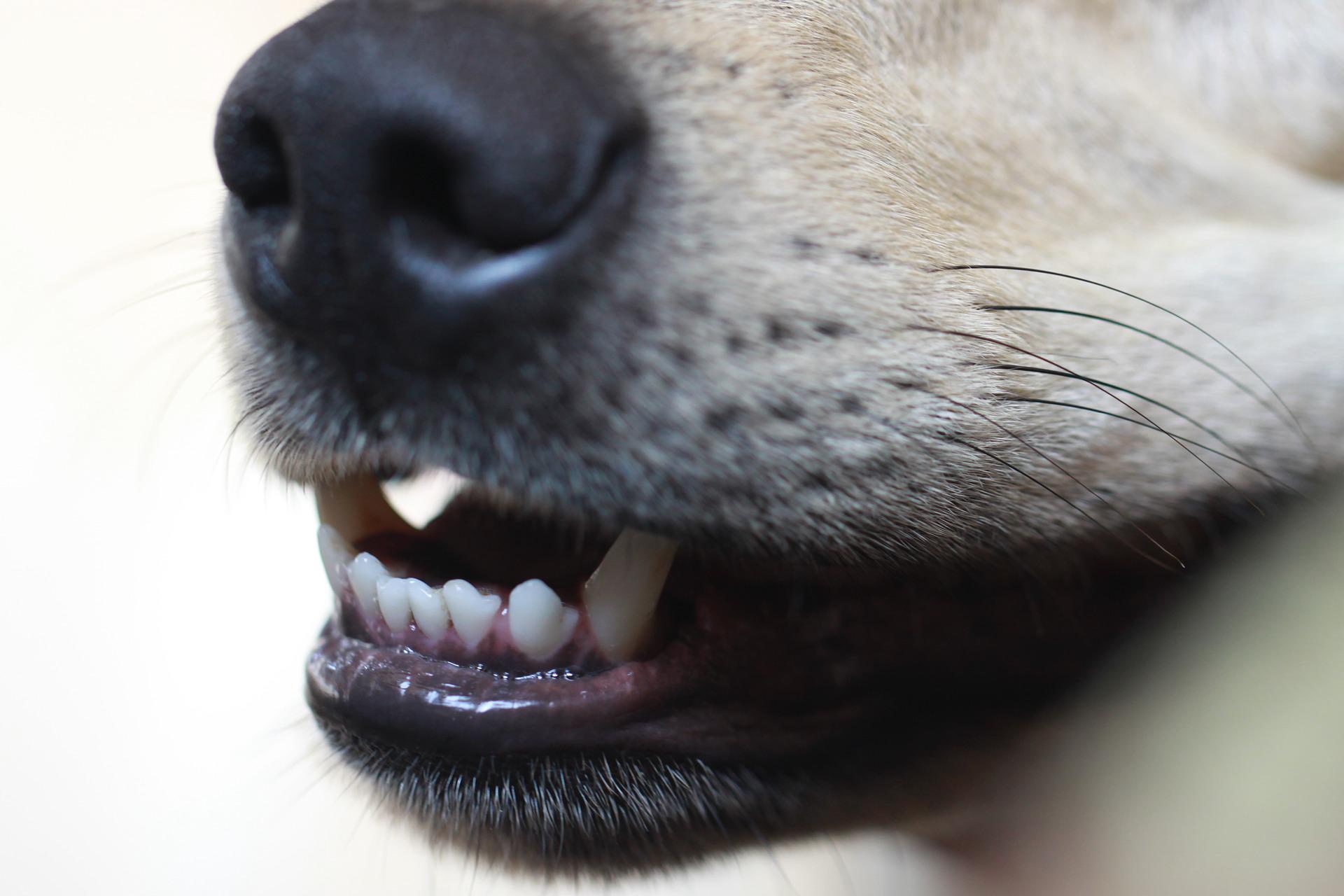We love our dogs, and nothing is better than the affection they can lavish on us. But sometimes, their kisses can be ruined by a bad case of halitosis – and dog breath is difficult to stomach! The pungent, offensive odor can make it difficult to snuggle and keep them close – what is causing such a stench?
The first thing to realize is that dog breath of this nature is not normal. Some dogs may have brief bouts of bad breath – if they eat out of the dumpster or maybe if they are experiencing some passing gastric difficulties. But instances of lasting cases of halitosis are typically related to something even more severe – periodontal disease. This condition is caused by bacteria that are deposited on the tooth in a sticky film called plaque. The plaque develops into a mineralized layer of tartar which can be toxic to the gum tissue. If not dealt with promptly, gum irritation, infection, pain, and tooth loss can all result. Long-term dental disease also can lead to cardiovascular disease, so you don’t want to dismiss bad breath too lightly. By the time your dog’s breath has become offensive to you, periodontal disease has already begun.
A comprehensive dental cleaning at the veterinarian’s office is the best way to achieve a healthy and clean mouth quickly. Unfortunately, even diligent brushing won’t treat periodontal disease on its own. The vet will also remove the tartar and disinfect the mouth to restore proper oral health. However, tooth decay has often crept under the gum line, and teeth may need to be pulled to return your dog’s healthy mouth.
While brushing your dog’s teeth may not work once the condition has progressed, you can typically avoid the entire situation by brushing your dog’s teeth regularly.
But the truth is, most of us don’t brush our dog’s teeth. If you want to try:
- Start small.
- Brush for 15-30 seconds with a small pediatric or finger toothbrush.
- Once you and your dog are accustomed to the practice, try to work up to 2 minutes.
- You can attempt to use toothpaste, but human toothpaste can be toxic to pets. Toothpaste specially formulated for pets – and flavored with poultry or beef – can make brushing more tolerable for everyone involved. Toothpaste obviously results in cleaner teeth as well.
Once you’ve implemented brushing, check out some other pet dental products. Some water additives have anti-plaque elements and can help reduce the growth of bacteria. Flavored pastes can be squeezed into unique toys, which assist with the removal of tartar and plaque when chewed. But one of the easiest ways to maintain oral health is to give your dog chew bones designed for oral health. Always supervise your pet when chewing on any bone of this type, as large pieces can break off if they do not chew it finely enough.
Is Dog Breath Genetic?
Any breed of dog can develop dental disease, but certain breeds are more vulnerable to the condition. Toy breeds like miniature Dachshunds, Poodles, Yorkshire Terriers, and Pomeranians are commonly affected, as are Shelties and Collies. Ask your veterinarian to evaluate your pet’s oral health at their annual checkup. If you ever notice your dog struggling to chew, bleeding from the gums, or exhibiting loose teeth or nasal discharge, bring them for medical help immediately. Soon, you should be back to happy doggy kisses and fresh breath.
Gulf Coast K9 Dog Training runs a state-of-the-art training facility in Bradenton, Florida.





